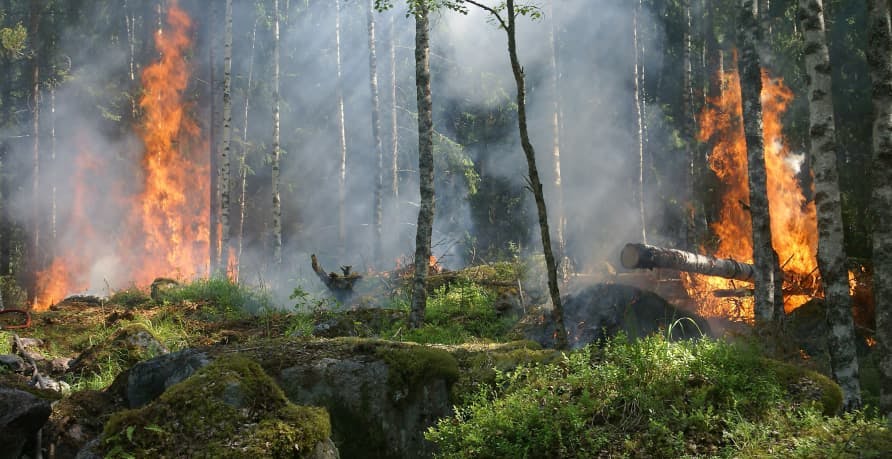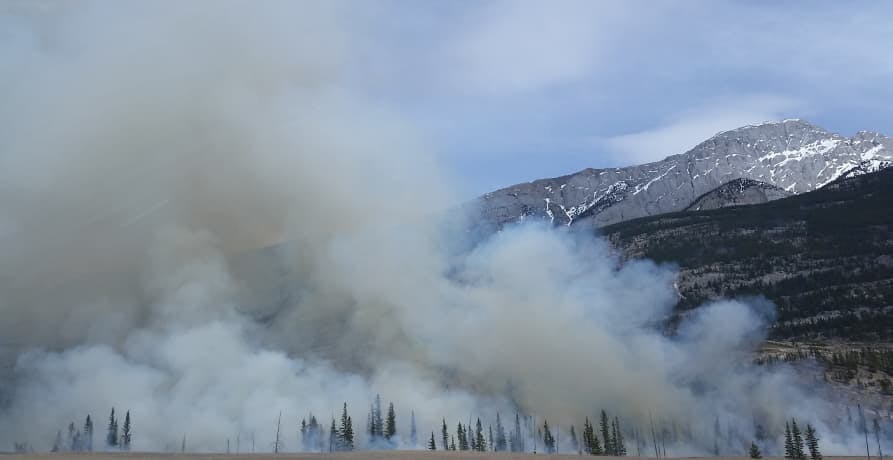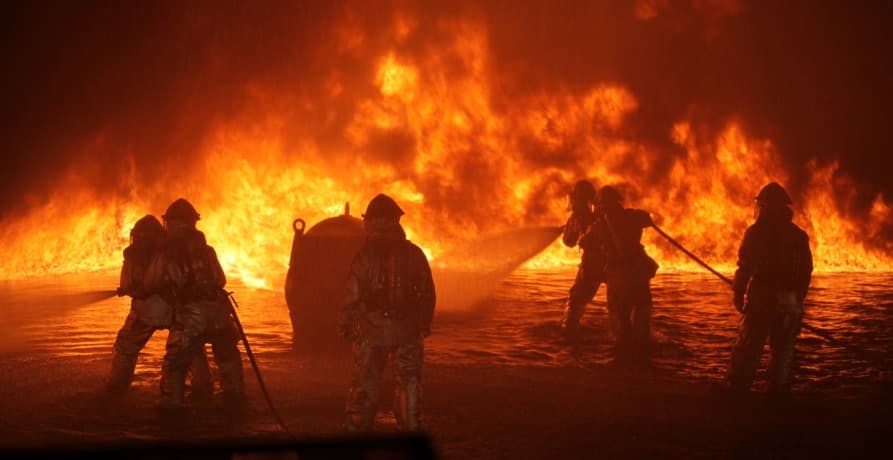ESG / CSR
Industries
State Farm Insurance Limits Coverage for Climate Risks



Insurance and how it works in the United States is already a divided problem on its own, but bringing natural disasters spurred by climate change into the mix has sent some insurance companies for a loop on what to do – such as State Farm insurance.
Why have some insurance companies, such as State Farm, limited their coverage options to customers in the midst of global warming? How will it affect society, and is there any probable solution for insurance companies like state farm to protect their clients without going bankrupt?
What is State Farm insurance?
State Farm is one of the most well-known insurance companies in the United States, and was first founded by George Jacbob in 1922 – where the company remains headquartered in Bloomington, Illinois. State Farm offers a wide range of insurance products and financial services to individuals and businesses.
👉 Other popular insurance companies in the U.S. include Geico, Allstate, and Progressive. However, State Farm is infamous for their networking skills – having cultivated a wide range of knowledgeable agents who work with customers of State Farm to find the best insurance plan for them.
While State Farm is most well known for their car insurance, the company also offers insurance for homeowners, renters, small businesses insurance, health insurance, and even life insurance – making it a one stop for many Americans looking for a primary insurance company. As a result, State Farm is one of the biggest car insurance providers in the country – and holds a significant market share.
State Farm doesn’t only offer multiple types of insurance plans to their customers, but they also provide other financial services – such as assistance with baking or securing mutual funds. In conjunction with offering quality customer service and multiple different types of insurance and financial services, State Farm has acquired a good reputation and is known to be one of the top insurance companies in the United States.
👉 State Farm insurance has its largest following in the state of California, home to almost 40 million Americans – meaning State Farm’s decision will impact at least 8% of the population in the United States.

How does State Farm insurance work?
State Farm Insurance works by offering various types of insurance services to their customers. Usually, the process of partnering with State Farm works in this general order:
- Choose Your Coverage: Before anything else is done, customers have to choose which type of insurance coverage they want – which can include life, renters, car, business, or homeowners insurance..
- Fill Out Application Form: Potential customers of State Farm have to fill out an application in order to request a quote. This form may include information about properties or cars they own, and the age of the driver’s to be covered under an auto insurance plan – which is necessary to draft an accurate quote for the potential customer.
- Premium Payment: The premium payment is the amount that is paid for insurance on a monthly basis. However, sometimes the premium is paid on a quarterly or annual schedule.
- Policy is Issued: After a customer has made their premium payment, State Farm can issue their policy – often listing their coverage, terms of conditions and use, and expiry dates.
After these four steps are completed, customers of State Farm are able to make a claim in the event of loss or damage depending on the type of insurance plan they have selected. Typically, State Farm will recruit the use of their staff to provide customers with support to determine what kind of coverage is possible and what kind of reimbursements can be made.
However, climate change is making State Farm’s usual business model more difficult to follow – and has left them with no choice but to reduce their coverage for certain insurance plans.

Why did State Farm insurance limit coverage for climate risks?
Recently, State Farm shared that they would no longer provide homeowners coverage under their insurance policies for those residing in California, and not only those who live in areas susceptible to wildfires – but across the entire state.
This decision doesn’t come from State Farm refusing to be an ally in the fight against climate change, but because of what climate change has done to insurance companies as a whole. In combination with inflation and the increased frequency and severity of natural disasters spiking up insurance prices, insurance companies are at risk of going broke entirely – resulting in them reducing the coverage plans to prevent their companies from going under.
California isn’t the only state that will suffer from reduced insurance. States prone to flooding like Kentucky, Louisiana, and Florida are also suffering to obtain viable homeowners insurance in the event a natural disaster destroys their home. As a result, State Farm has announced they will no longer accept new applications for homeowners insurance in California.

👉 State Farm is well aware of the need to mitigate losses from wildfires and other natural disasters, but State Farm felt they have no choice but to pull the plug on new applications for the sake of the insurance company financially.
State Farm’s choice to reduce their coverage for climate risks isn’t unique to State Farm; a lot of companies have been pulling back on their coverage as of late – but why?
How will the decision on behalf of State Farm insurance impact Americans?
State Farm’s choice to stop accepting new homeowner’s insurance policy applications across the state of California is bound to impact not only residents of the state, but with the ripple effect it is likely to create.
If State Farm has shown they are able to easily pull the plug on one of the most crucial types of insurance at the moment, being one of the most reputable insurance companies on the market – other insurance companies may not hesitate to start to do the same. If other insurance companies were to stop offering insurance policies when they are clearly needed most in the country, millions of Americans could be left on their own to fight against the catastrophic consequences of climate change and the natural disasters they have fueled.
However, specifically in California, where many residents of the state are subscribed to insurance services with State Farm – residents will become more vulnerable to face the negative consequences and costly repairs of their homes if something like a wildfire or earthquake is to happen in their area. State Farm will no longer be able to provide full coverage to help with repairs, putting Americans that use State Farm in a stressful fiscal situation.
Thousands of Americans will be left vulnerable to losing their homes or assets entirely, with no way to be reimbursed – and as climate change worsens and the range of susceptible areas grows, the threat will become gruesome to more Americans than most can imagine. Americans will not only be unable to pay for the damages associated with a natural disaster, but they will become bankrupt themselves – and develop new health problems and an inability to remain stable. This is likely to overwhelm health insurance companies too, ultimately creating a massive cause-and-effect of issues for the country both in terms of finances and mortality.
👉 The new predicament with State Farm demonstrates how climate change is not only becoming a global problem as it threatens life, but that it is impacting finances around the world.
This is exemplified by how tax deadlines are also being extended across the country, as many homeowners and businesses are now facing damage repairs that they weren’t expecting as a result of a natural disaster spurred by climate change itself – proving how climate change is starting to put the country in economic peril.
Is there any way to encourage insurance companies like State Farm to reinstate their insurance policies?

How can State Farm and other insurance companies move forward when dealing with the repercussions of climate change?
In the United States, especially as the country begins to face the burden of preventing a default, it’s going to be difficult to persuade insurance companies to reinstate policies that are depleting all of their financial reserves.
Ultimately, the easiest and most effective way to reinstate insurance policies in companies like State farm would be to tackle climate change as a whole – but getting all fifty states to be in line with the same climate legislation has proven to be a continuous struggle for the country, even after Biden passed last year’s Inflation Reduction Act of 2022. As of right now, Americans residing in states where insurance companies have pulled out (like Florida due to hurricanes) – are paying an arm and a leg for insurance; relying on private companies that don’t have the resources to protect them in the event a natural disaster strikes.
However, until an effective collective effort to reduce global temperatures is implemented across the country to reduce the frequency and severity of these natural disasters causing insurance companies to bow out – there are other measures that can be taken.
For instance, programs like the Safer From Wildfires initiative, which is a fire resilience program, can help to reduce the risk of homes and businesses burning down entirely. In addition, lawmakers have to work harder to prevent new infrastructure from being built in high risk areas. In a similar way to New York sinking, it isn’t about halting construction in the state as a whole – but retreating to new areas where the likelihood of a deleterious mess following a natural disaster is greatly reduced.
Still, there are roadblocks that could get in the way of these beneficial resources – such as the debt ceiling deal, where many budget cuts are being made that were intended to help Americans afford their healthcare and reduce the pressure already present of insurance companies (such as Biden’s original plan to help reduce the financial strain on Medicare) will make this path difficult for insurance companies like State Farm to achieve.
Ultimately, the best way to compel insurance companies like State Farm would be to demonstrate that the United States has the power to take hold of its current greenhouse gas emissions and reduce atmospheric temperatures which are causing these natural disasters. Until then, State Farm – and potentially other insurance companies – are likely to remain wary of the situation.
What about Greenly?
If reading this article about how climate change has pushed insurance companies like State Farm to reduce their coverage for climate risks has made you interested in reducing your carbon emissions to further fight against climate change – Greenly can help you!
Managing your company's carbon emissions in the midst of climate change can become difficult to manage, and the stress of reduced coverage on behalf of insurance companies like State Farm can make it even more overwhelming – but fear not. Greenly is here to help! Book a demo with one of our specialists today to see how we can help you get started in your climate journey.
Greenly can help you make an environmental change for the better, starting with a carbon footprint assessment to know how much carbon emissions your company produces.



